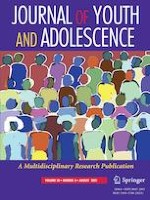07-04-2021 | Empirical Research
Longitudinal Discrepancy in Adolescent Aggressive Behavior Problems: Differences by Reporter and Contextual Factors
Gepubliceerd in: Journal of Youth and Adolescence | Uitgave 8/2021
Log in om toegang te krijgenAbstract
Little is known about the developmental course of informant discrepancies in adolescent aggressive behavior problems, though whether aggression increases or decreases over time depends on reporter. Evaluating discrepancies longitudinally can uncover patterns of agreement/disagreement between reporters across time and determine contexts that give rise to these differences. This study addresses longitudinal informant discrepancies by examining parent-report and adolescent report of adolescent aggressive behavior problems over time and further investigates possible contextual factors related to the longitudinal discrepancy. Five-waves (from age 11.5 to 15) of multi-informant data from the PROSPER project (N = 977; 52% female; 87% Caucasian) were used to test longitudinal change in informant discrepancies between mother-, father-, and adolescent-reported aggressive behavior problems. Results showed that parents reported more aggression than their adolescents at age 11.5 and that the discrepancy at first converged over time before diverging. By age 15, adolescents reported more aggression than their parents. Parental hostility, family status, and adolescent gender predicted change in informant discrepancies. Practical and developmental implications are discussed for assessing and determining accurate change in adolescent aggressive behavior problems.
